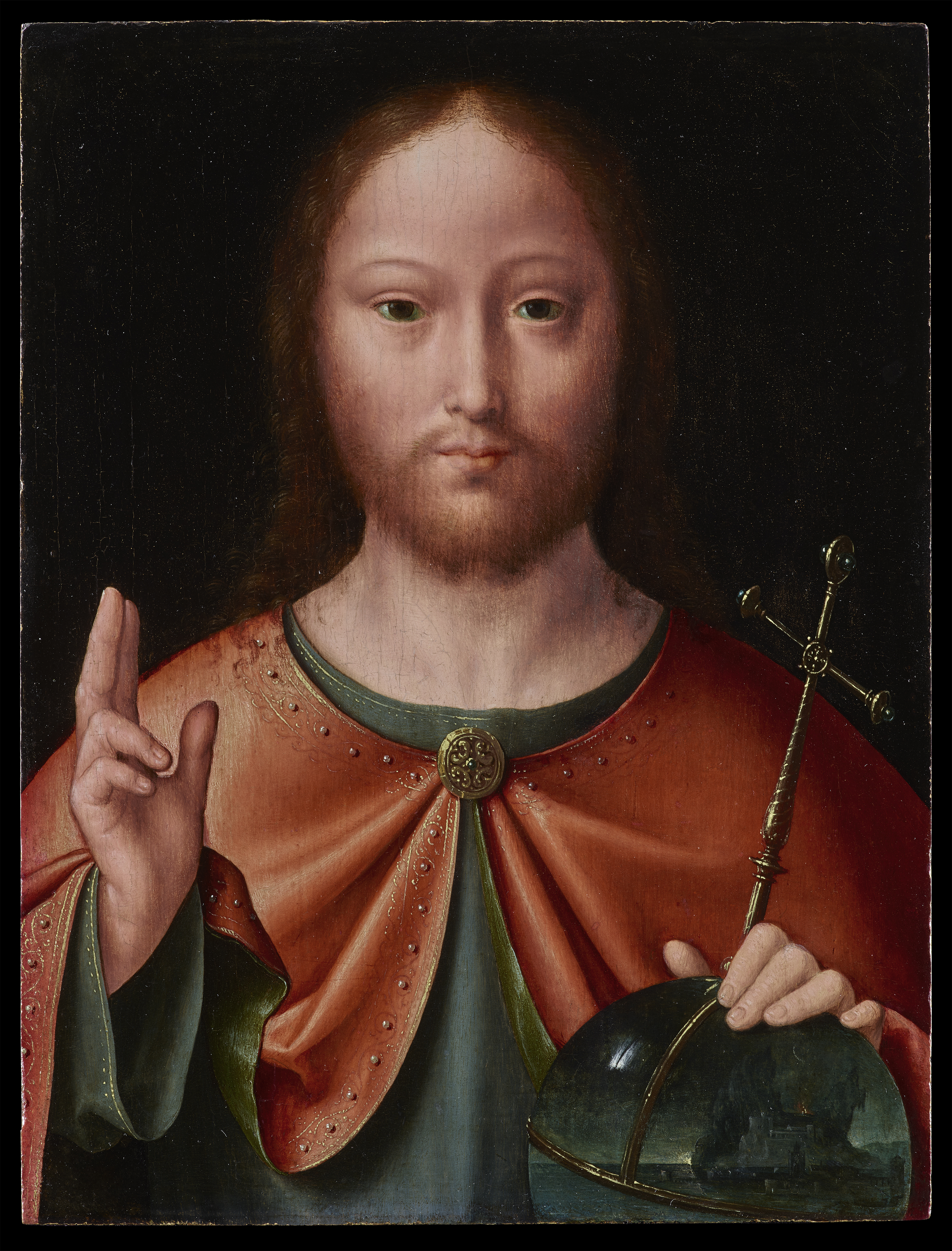Salvator Mundi
With one hand upon an orb, and the other raised in blessing, Jesus is shown here in a format known as the Salvator Mundi – or the ‘Saviour of the World’. The glassy orb, mounted with a cross, represents Christ’s dominion over the Earth – according to Christian belief. The light of a window reflected in the orb’s exterior serves a dual purpose. It can at once be read as a symbol of the light of Christ’s love, but also allows the artist to show off their skill at depicting a reflective surface – as if recording the natural light pouring through the studio window at the time this panel was painted. The Salvator Mundi hovers on the threshold of the spiritual and the earthly realms. The engaging directness of Christ’s pose would have appealed to viewers, and the intricacy of the costume details – such as the tiny pearls – would have rewarded close looking. This small painting was perhaps originally paired with another, representing the Virgin Mary at prayer, as part of a double painting called a ‘diptych’, which could be opened and closed for intimate, private devotion – a little like a book.
This painting was created by an artist working in the large and busy workshop of the painter Joos van Cleve (1511-41/2), based in the thriving port city of Antwerp, in present-day Belgium. Dendrochronology, the process by which the age of a piece of wood can be tested, showed that this painting has been executed on a panel made of Baltic oak dating to between around 1512 and 1550. Small devotional images, and those representing the Salvator Mundi in particular, were popular. Van Cleve would have made a master painting which was then traced by members of his workshop to transfer onto new panels to meet this demand. In this painting, some of the transferred drawing remains visible to the naked eye – for example around Christ's fingers, lips and nose. Recent technical investigation using infrared technology revealed the full drawing beneath the paint layers which showed not just a straightforward copy, but also areas of freehand in which this artist has grappled with the placement of the eyes, the orb and the cross. Although it is not a direct copy, Dulwich Picture Gallery’s painting bears close resemblance to a Salvator Mundi by Van Cleve in the collection of the Louvre Museum, Paris.

